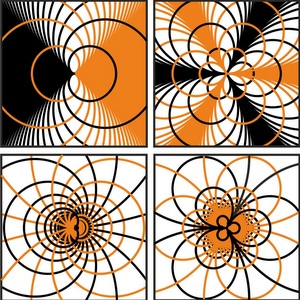Samara University scientists together with the Russian Academy of Sciences have developed a new method for creating optical elements, which makes it possible to improve both laser data-transmitting in the atmosphere and biomedical devices. The research results are published in Optics Express journal.
Russian scientists have developed a new approach to the construction of metasurfaces, making it possible to create optical elements for devices that can control the polarisation and electromagnetic waves phases, as well as create light fields with previously unexplored properties, including unique laser beams.
"We’ve developed an optical element based on a metasurface and demonstrated its effective operation: simultaneous formation and focusing of a special laser beam with a vortex polarisation structure. In the focus of such a beam, light energy partially spreads towards the source, which is impossible when focusing classical laser beams," – the author of the study, Assistant Professor of Samara University Technical Cybernetics Department Dmitry Savelyev said.
The scientist also noted that higher-order modes of metasurfaces provide a large overall reverse energy flow. That is, laser beams formed with polarising elements are resistant to interference caused by the transmission of information in various turbulent media, for example, in the Earth's atmosphere.
The scientist explained that the implemented metasurfaces make it possible to create new types of optical traps. They work like a vacuum cleaner: the reverse energy flow near the optical axis makes the particles move to the source.
In addition, according to the experts, combining a polariser and a focuser in one element makes it possible to create a large reverse energy flow near the optical axis. This will help to improve optical tweezers, laser cutting and engraving in biology, medicine and material processing, as well as to reduce the number of optical elements in devices.
"Polarisation control allows us to create light fields with new properties. By changing the laser beam structure, it is possible to modify the nature of the impact on the object; and this is very important for laser cutting and engraving in the processing of materials," – Dmitry Savelyev said.
